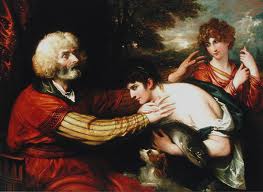For a smallish museum, the Delaware Art Museum has gotten a lot of attention from me on this blog. That’s because it has often been creative, and over the weekend I learned of another example worth remarking about –partley becauses it gets visitors to focus on the permanent collection — thanks to Edward Sozanski, the Philadelphia Inquirer‘s contributing art critic.
 Sozanski’s story, Delaware Art Museum and How It Grew, outlines where and how the museum got parts of  its collections. The roots go back to the death of local illustrator  Howard Pyle, which a group of locals bought from his widow for what became the museum, and continue through other gifts, notably of Pre-Raphaelite paintings from the family of Samuel Bancroft Jr. and of a group of more than 5,000 works Helen Farr Sloan, the widow of John Sloan. They provide evidence for the simple fact that, as the article says, “the majority of acquisitions are gifts or bequests; few museums can afford to buy much of anything that’s worth bragging about. Furthermore, a few major gifts prove to be the catalysts around which the collection accrues, like a coral colony.”
Sozanski’s story, Delaware Art Museum and How It Grew, outlines where and how the museum got parts of  its collections. The roots go back to the death of local illustrator  Howard Pyle, which a group of locals bought from his widow for what became the museum, and continue through other gifts, notably of Pre-Raphaelite paintings from the family of Samuel Bancroft Jr. and of a group of more than 5,000 works Helen Farr Sloan, the widow of John Sloan. They provide evidence for the simple fact that, as the article says, “the majority of acquisitions are gifts or bequests; few museums can afford to buy much of anything that’s worth bragging about. Furthermore, a few major gifts prove to be the catalysts around which the collection accrues, like a coral colony.”
But there’s more, and that’s the creative part — how Delaware has chose to display “100 Works for 100 Years,” in celebration of its centennial. When the museum announced the exhibition in April, I somehow missed this aspect. As Sozanski describes it (I obviously haven’t seen it myself), the exhibition is
… not gathered together in the special exhibitions space but distributed throughout the building, even overflowing into the Copeland sculpture garden.
As if on a treasure hunt, visitors proceed with a map-checklist. With one noteworthy exception, all 100 objects are found in the galleries where they normally reside; each is identified by a special label, easily recognized.
It’s these labels that explain how the museum acquired each object, through gift, bequest, or purchase.
Online, visitors will find a map listing the 100 works and their locations. They will also find audio clips about the works, recorded by “community members” including the First Lady of Delaware, the conductor of the Delaware Symphony, a charter school student, the state’s poet laureate, and others. One by Danielle Rice, the museum’s Executive Director, discusses The Return of Tobias, by Benjamin West, pictured here.
Something similar to that tactic, non-experts commenting on paintings was tried notably with Leonardo Live, the documentary made for Leonardo da Vinci: Painter at the Court of Milan, shown at the National Gallery in London several months back to mixed results. I know that other museums have done so as well. Some have had non-experts  write labels. When I’ve heard or seen these efforts, most seem to fall short, for me at least.
But the treasure hunt aspect of this show seems to be handled very well. It can be followed or, seems to me, ignored, as each visitor prefers.
Add this to previous posts, which include pop-up painting reproductions around the state and a battle of the sexes contest to see if people can really tell who painted a picture, and the Delaware Art Museum seems to me to be on a roll.
Photo Credit: Courtesy of the Delaware Art Museum
